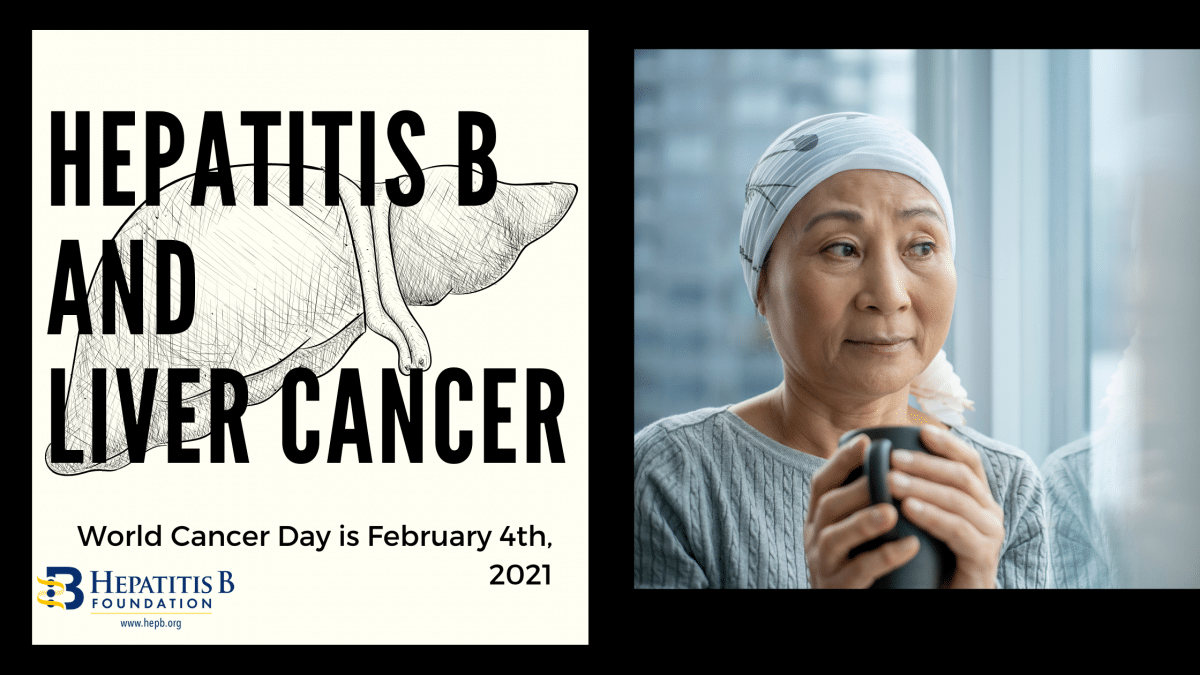
Tomorrow, February 4th, marks World Cancer Day! This day harnesses the international community to “raise awareness, improving education and catalysing personal, collective and government action, we’re working together to reimagine a world where millions of preventable cancer deaths are saved and access to life-saving cancer treatment and care is equal for all – no matter who you are or where you live.”
Hepatitis B and Liver Cancer
Cancer is a disease in which normal cells change and grow uncontrollably, that can form a lump called a tumor or mass. A tumor can be benign (not cancerous) or malignant (cancerous). The name of the cancer depends on the part of the body where the cancer first started. The term “primary liver cancer” refers to hepatocellular carcinoma (HCC), the most common type of liver cancer, which starts in liver cells called “hepatocytes.”
In the United States, primary liver cancer has become the fastest growing cancer in terms of incidence (new cases), in both men and women. From 2012-2016, the incidence of liver cancer increased by 2.5%, the largest increase of any cancer during the time period. In 2018, an estimated 42,220 new cases of liver cancer were diagnosed and an estimated 30,200 people died.
Liver cancer mortality also continues to increase, especially among Caucasian, Alaskan Native, American Indian and Hispanic males. Liver cancer disproportionately impacts certain communities more than others: in the U.S., it is now the 5th most common cause of cancer death for men overall, but the 2nd most common cause of cancer death among Asian American and Pacific Islander men, and the 4th most common cause of cancer death among Alaskan Native, American Indian and Hispanic males. The five-year survival rate is about 18%.
Worldwide, the most common risk factor for liver cancer is chronic infection with the hepatitis B virus. Chronic viral hepatitis infections (hepatitis B and hepatitis C) cause at least 80% of all liver cancers. In the United States, the leading cause is chronic hepatitis C virus infections because of the greater number of Americans infected with this virus. Chronic infections with hepatitis B or C are responsible for making liver cancer the most common cancer in many parts of the world. Take a look at other factors which might put you at a higher risk for developing liver cancer.
Prevention
The hepatitis B vaccine was named the first “anti-cancer” vaccine by the U.S. Food and Drug Administration because it prevents chronic hepatitis B infections, thereby preventing liver cancer caused by the hepatitis B virus. In the United States, the hepatitis B vaccine is recommended for all infants and children, and adults at high risk for infection. In many countries, including the United States, vaccinating newborns with the hepatitis B vaccine at birth has resulted in a dramatic reduction in the number of new cases of liver cancer caused by hepatitis B. For more information about the vaccine, visit here.
For more information about liver cancer please visit our Liver Cancer Connect page.
References
https://www.worldcancerday.org/about-us
https://www.hepb.org/research-and-programs/liver/

